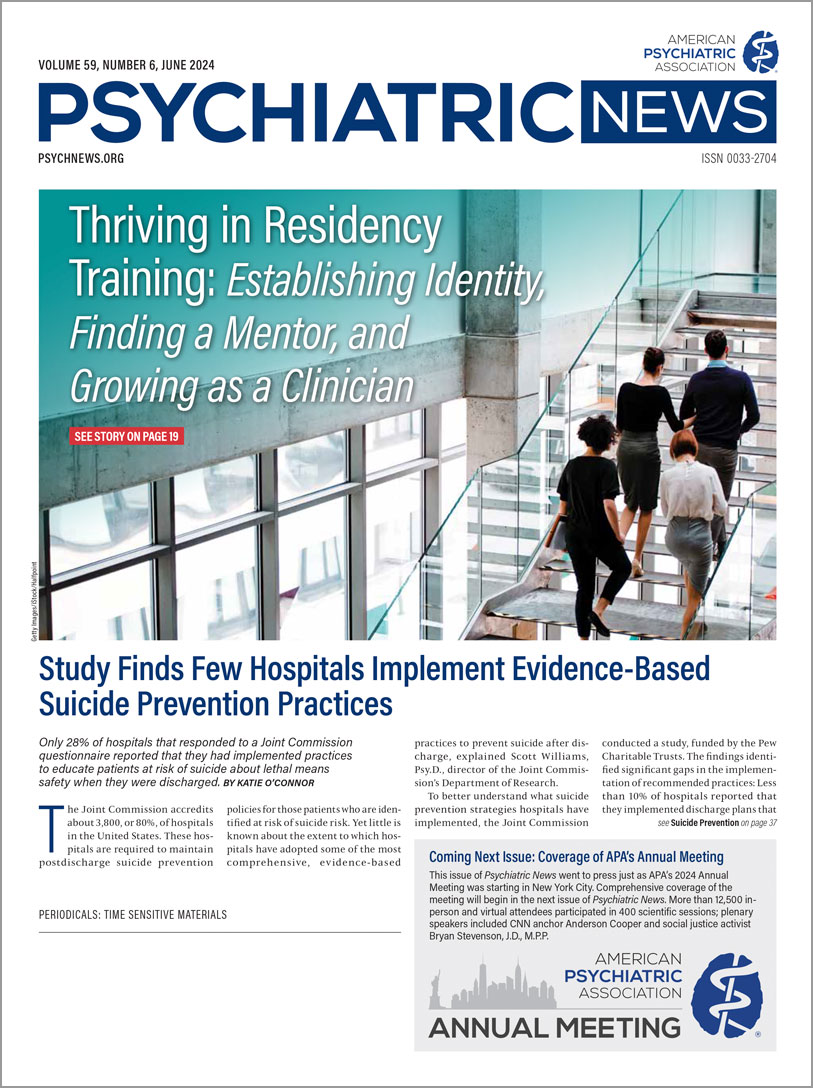More than 1 in 3 young people who died by suicide had a health care visit in the month before their deaths. Nearly 9 in 10 had a visit in the previous year.
Juliet Edgcomb, M.D., Ph.D., called these facts tragic during a recent Brain & Behavior Research Foundation (BBRF) webinar. But she also pointed out that these statistics offer some hope. “There is promise that these health care visits can serve as a critical point of intervention, not only when a person is in crisis, but in preventing the child from reaching that point of crisis,” said Edgcomb, a child and adolescent psychiatrist and the associate director of the Mental Health Information and Data Science Hub at the University of California, Los Angeles.
BBRF is the nation’s top nongovernmental funder of mental health research grants. It was formerly named the National Association for Research on Schizophrenia and Depression.
As the United States has grappled with increasing suicide rates among youth in recent years, Edgcomb emphasized that suicide prevention ultimately hinges on early detection and intervention. And that naturally leads to the question: “How do health care providers delivering care in a general health setting, sometimes in the hallway of an emergency department, deliver the highest quality, evidence-based care that has the highest chance of making a meaningful difference and reducing risk of suicide death?” she said.
With the support of a BBRF Young Investigator Grant, she and her colleagues set out to identify the most accurate way of using electronic health record data to detect at-risk youth who visit emergency departments (EDs) while eliminating biases.
Edgcomb and her colleagues analyzed the health records of 600 children aged 10 to 17 years who visited the ED for a mental health–related emergency between 2015 and 2019. They conducted what they called the “gold standard” of classification, combing through the records themselves and reading clinician notes to determine if the emergencies were related to suicide and where on the spectrum of risk (thoughts, behaviors, or planning) the patients fell. They then trained and tested machine learning algorithms using this gold standard classification. The goal was to determine how the most commonly used classifiers—visits coded as suicide related or for which suicide was the patient’s chief concern—compared with the algorithms. The
findings were published in
JMIR Mental Health in March 2023.
The researchers found that trying to identify at-risk youth by solely relying on diagnostic codes resulted in missing 29% of children presenting for suicide-related emergencies. Relying on suicide as the chief complaint resulted in missing 54% of these children. The machine learning-based models were significantly more sensitive, the authors found.
However, not all populations of children were detected equally, Edgcomb said during the webinar. “Specifically, boys and younger children were less likely to be detected correctly.” This led the researchers to expand their study to include 3,000 children. Analyses of this larger study are underway to focus on addressing the gaps in detection that the pilot study identified among boys and younger children, including those aged 6 to 12.
Many researchers are working to determine how to develop more accurate detection models, Edgcomb said, such as by using clinician notes. But numerous challenges remain, such as ensuring algorithms are not biased and the fact that children can be a moving target. “Manifestations of suicidality may not differ much between a 40-year-old and a 45-year-old, but the way somebody looks in distress when they’re 10 is very different from when they’re 15,” she explained.
But she shared optimism about the possibility of developing algorithms that could meet the challenge. As the volume of health data gets larger, health systems communicate more, and natural language processing evolves, more opportunities are emerging. “Suicide is a highly prevalent condition for which personalized medicine offers hope,” she said. “There is hope that things are getting better and that our tools are improving to meet our patients’ needs.”
The JMIR Mental Health study was supported by BBRF, the American Foundation for Suicide Prevention, the Harvey T and Maude C Sorensen Foundation, the Thrasher Research Fund, the National Institute of Mental Health, and the National Center for Advancing Translational Sciences of the National Institutes of Health. ■

